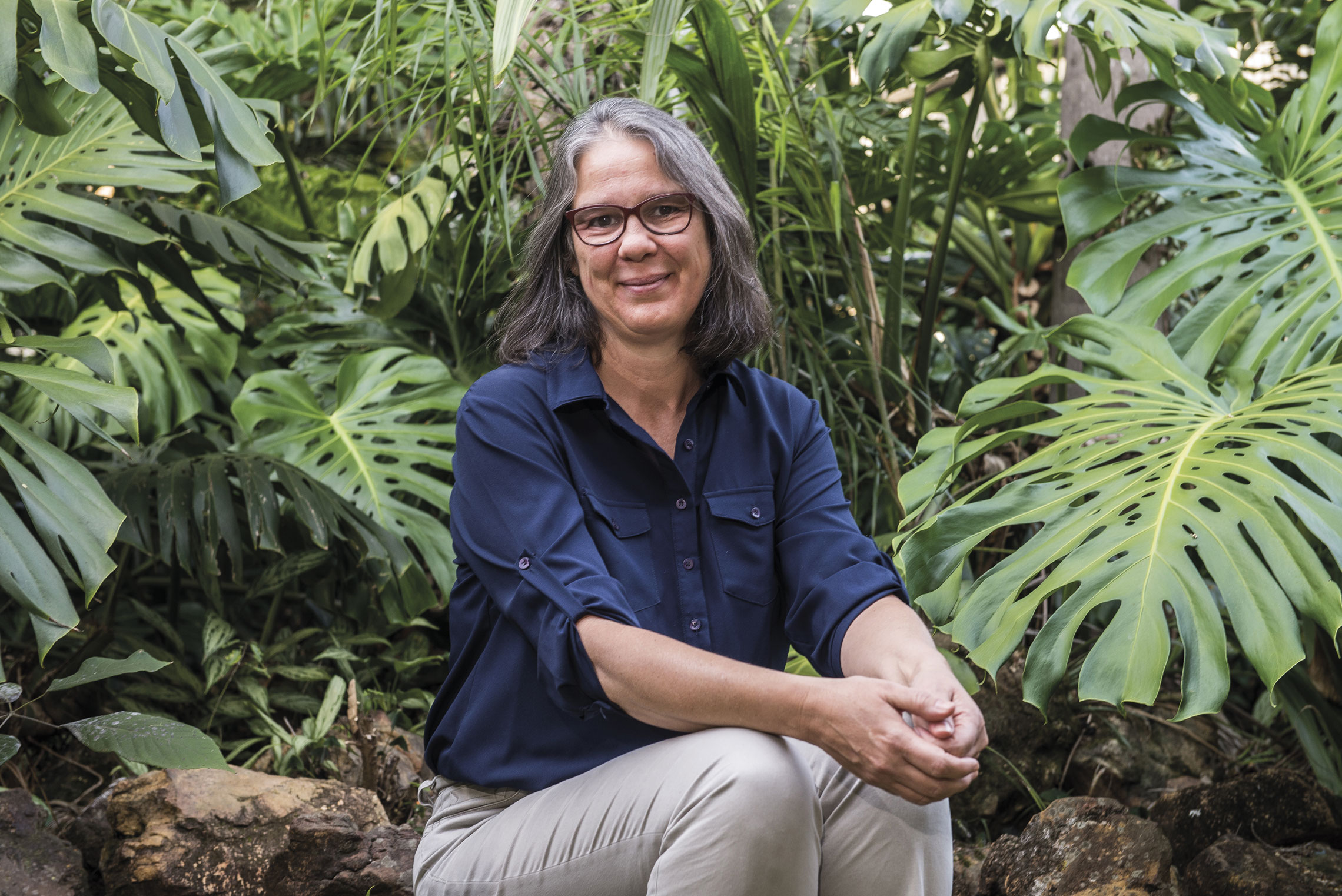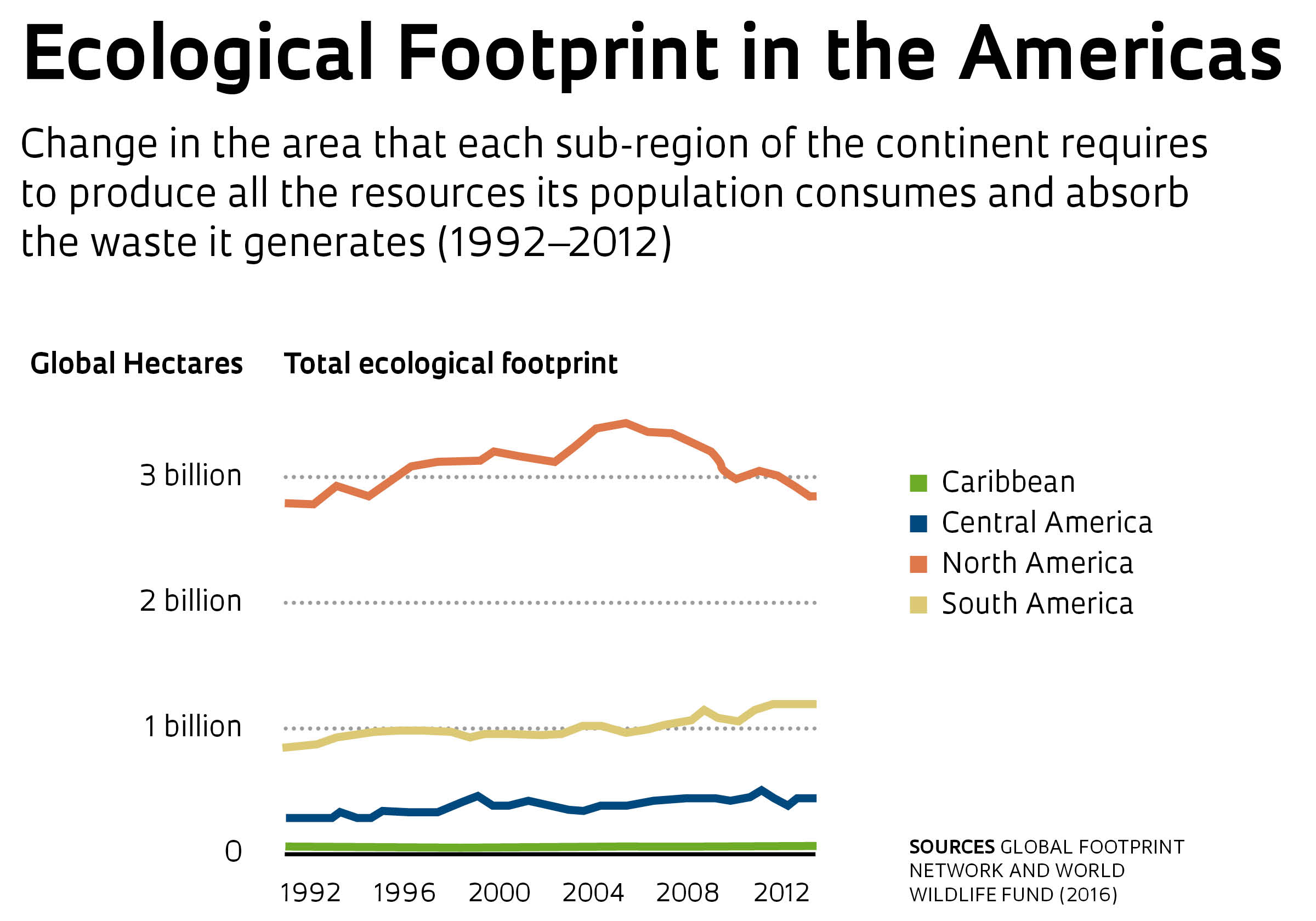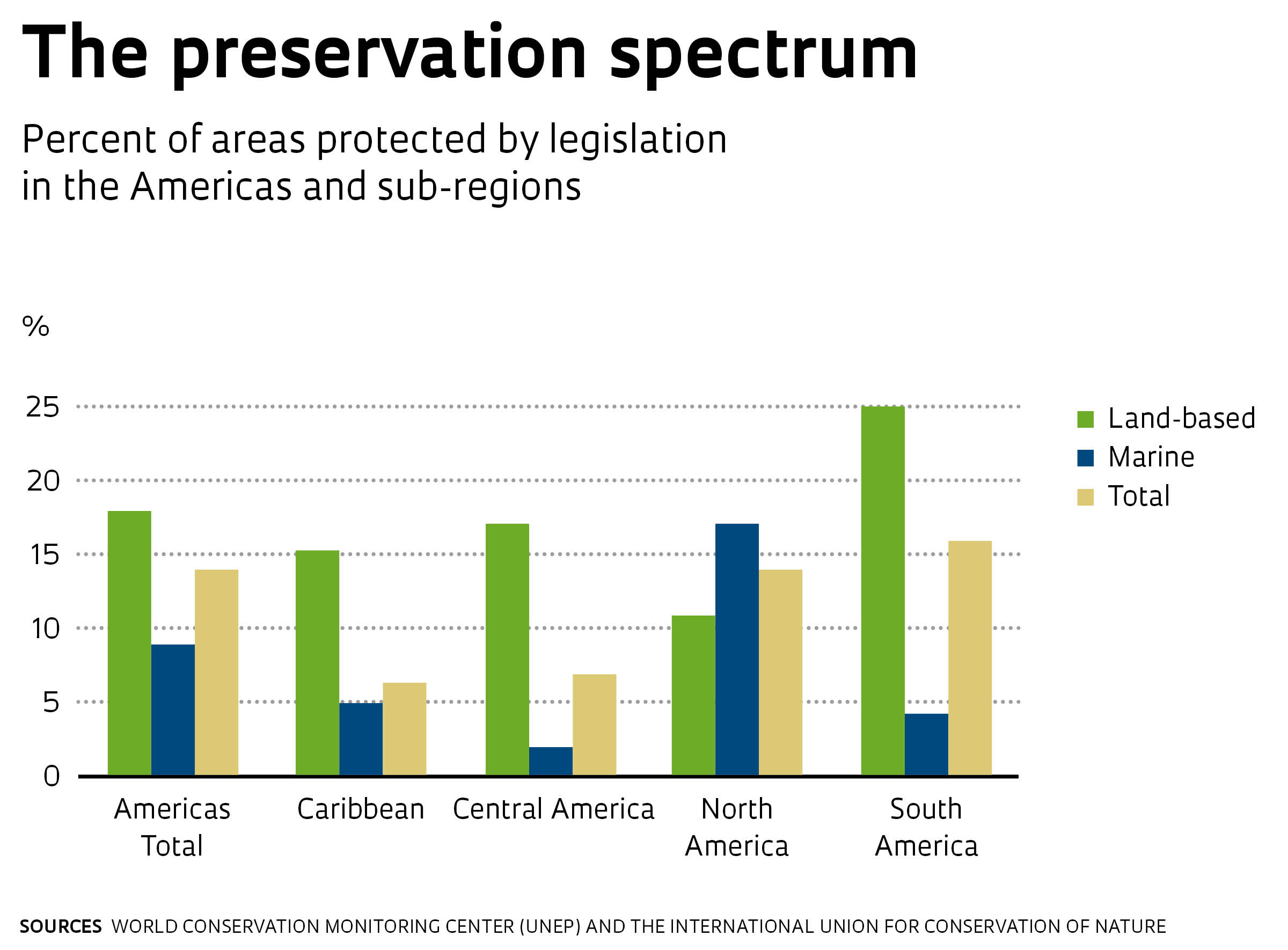At the end of March in Medellin, Colombia, researchers and officials from 129 countries participated in the 6th Session of the Intergovernmental Science-Policy Platform on Biodiversity and Ecosystem Services (IPBES), which is linked to the United Nations and seeks to organize scientific and other forms of knowledge on biodiversity and the benefits it provides to human life on Earth. Reports on degradation and restoration of areas and the situation with regard to biodiversity in four regions were approved in the plenary session. Twenty-five Brazilian researchers participated directly in organizing the information; by July they are expected to release another diagnostic evaluation, this one specific to the situation in Brazil. It will be coordinated by the biologists Carlos Joly of the University of Campinas (UNICAMP) and Fábio Scarano of the Federal University of Rio de Janeiro (UFRJ).
Forty-seven-year-old biologist Cristiana Simão Seixas played a prominent role in this group. She was one of the coordinators of the IPBES Americas Assessment, a document which mapped the rate at which biodiversity is being lost in this region and its impacts on the quality of human life, and suggested strategies to curb this process. A researcher at UNICAMP’s Center for Environmental Studies and Research (NEPAM), in recent years Seixas became involved with a research topic that lies at the heart of the concerns of this platform: interactions between biodiversity conservation and economic and social development. She was raised in the countryside of São Paulo State, and has been interested in the subject since obtaining her undergraduate degree in biology and master’s in ecology (both at UNICAMP), and went on to develop this interest during her doctoral work in Environmental Management and Natural Resources at the University of Manitoba, Canada, which she completed in 2002. In the following interview, Seixas presents the conclusions of the assessment, explains the importance of traditional knowledge, and shows why the nonmaterial value of biodiversity also must be evaluated.
There is no part of the world that has not been touched by human activity. This isn’t even true at the North Pole
What was evaluated in the Americas Assessment?
The focus of the assessment was not just to show that we are losing biodiversity. Everyone already knows this. The objective was to point out the speed of this process and how the contributions biodiversity and ecosystem services make to people’s quality of life are changing. From this, we put together scenarios and policy options to try to halt the loss.
What is the scale of this?
The data show that 95% of the prairies in North America have already been transformed into areas dominated by human activity. The same is true for 88% of the Atlantic Forest, 70% of the Rio de la Plata grasslands, which includes the Pampas, 50% of the Cerrado badlands, 17% of the Amazon Forest, and so on. In some regions, biodiversity is decreasing very quickly. Even so, the Americas contain 40% of what is known as global biocapacity, which is the possibility of providing services and benefits for humanity. This is measured by the ecological potential of the ecosystems of the Americas, the contribution of technologies, and the ability to absorb waste from economic production. The region has 13% of the world’s population and 40% of global capacity to produce services for humanity. At the same time, we have 22.8% of the world’s ecological footprint, which is clearly disproportionate. The ecological footprint is the impact that the economic production and the development of the countries leave on the ecosystems. It continues to grow in South America, the Caribbean, and Central America. But in the United States and Canada, although these countries are responsible for two-thirds of the ecological footprint in the Americas, the trend is decreasing. This is the good news: this process can be slowed.
How?
The diagnosis shows initiatives here and there that can slow things down in some areas. We have to learn from the examples that are working. There is disorderly economic growth, and expansion in agriculture, mining, and pollution, in addition to the climate changes. But there are also initiatives, still on a small scale, for sustainable agriculture, sustainable practices for water management, forests, fishing, hunting, etc. In this sense, we have a lot to learn from traditional and indigenous populations. The assessment suggests that the Americas are not only a highly biodiverse but also culturally diverse region.
What is responsible for the decrease in North America’s ecological footprint?
It’s impossible to say exactly, but there are changes in human behavior and in patterns of consumption. Organic agriculture is growing, we have agroforests, less use of pesticides, laws controlling industrial waste.
And in South America? What is the potential for reduction?
The increase in our ecological footprint has to do with many people moving out of poverty and consuming more. This is the good side, which is the socioeconomic issue. There is an important piece of data to analyze, the ecological reserve of each country, which is its biocapacity minus its ecological footprint. In the United States, the balance is negative. In Brazil it is very positive, and there is great potential to promote sustainable development.
How do cultural and biological diversity go together?
The purpose of IPBES is to provide the best knowledge available for decision making. This depends on the science and also on knowledge from indigenous or traditional communities. The populations who live in an ecosystem understand how it works. There is a system of values and knowledge coupled to the biophysical system. These populations can teach us how to manage ecosystems sustainably, taking full advantage of them without destroying them.
How can this type of knowledge be incorporated into the assessment?
We incorporate these examples in the form of case studies. By definition, this knowledge is local. We have made an effort to collect ethnographic, anthropological, and ethnobiological studies, which show, for example, how indigenous peoples have been managing hunting in a sustainable manner for centuries. They also have shown that the indigenous peoples in the upper Rio Negro region created new varieties of cassava, through management and plant breeding.
Are there other highlights?
None of them is specifically more representative. They are unique cases and each one has particular features. The management of cassava in the Rio Negro region of the Brazilian Amazon is one example. There are reports, which are now confirmed by satellite images, that much of what we thought were intact forests in the Amazon are actually areas which were managed and designed by the people who lived in the past and utilized the Brazil nut trees, for example. Humans have been managing these environments for thousands of years. There is no part of the world that has not been touched by human activity. This isn’t even true at the North Pole.
What was it like to bring together researchers from different areas to produce the assessment?
It is important to understand how the IPBES works. For each diagnostic, there is a call for researchers and interested people. Eighty percent of the participants must be nominated by governments (in the case of Brazil, by the Ministry of Foreign Affairs), and 20% by civil society and the private sector. Then IPBES makes the final selection. Although the idea is that there should be a balance between researchers in the human sciences and natural sciences, this was not possible. The nominations were predominantly in the area of biology. Consequently the large majority were biologists, ecologists, agronomists, climate scientists, and few economists, sociologists, and anthropologists. They also attempted to bring together people representing the different biomes and sub-regions of the Americas. However, there were no specialists in the Arctic. The solution was to invite 50 contributing authors, specialists who will help to write a few paragraphs about a given topic.
How do you reconcile the preservation of biodiversity with development?
The assessment makes it clear that the protected areas are very important for conservation, but are not enough. And that strategies for restoration are equally important for degraded areas, but should not be the main policy. We need to think about how to more sustainably manage areas that we are already exploiting. It is possible? I believe it is. There must be political strength and it will be necessary to deal with countless interests, but the diagnosis presents several possibilities. In the case of agriculture, there is knowledge about how to boost productivity in an area without major impact. Another point: more energy must be generated, because the population is growing. What are the options? Maybe building a hydroelectric power plant is necessary, sure. They should not be seen as villains. But dams should be built in areas where there is already a large waterfall and little impact. There are always options, and among them, a combination that produces fewer losses. It is necessary to put the different options and gains and losses down on paper, but it’s not just to count the economic value. When an indigenous population is displaced from their area, they don’t lose only their source of sustenance. Culture and locally developed knowledge will be lost. Many displaced people end up disappearing. The Americas concentrate 15% of the world’s languages, and nearly two-thirds of these are threatened or at risk of extinction. There is a lot of culture displaced by dam construction, mining, and land conflicts.
How can behaviors be changed?
We won’t get very far without promoting greater awareness. If you ask a person how much of her well-being comes from nature, she will probably mention food. In fact, it is food, water, the clothes we wear, the air we breathe. The well-being of walking in a square, a park, a forest, everything comes from nature. Living in cities, people have lost this perception. Furthermore, their consumption choices generate impacts on nature without them even knowing. The issue is not stopping consumption, but consuming consciously. What food am I going to buy? Do I know what impact it had on nature? Will I buy just any wood to build my house, or only certified wood? These choices can help minimize the impact. Another focus is to create policies to better organize the landscape. For example, plants are dispersed by wind or with the help of birds. We need to think about ecological corridors for fauna and flora, encouraging more pollinators to increase the production of agricultural crops. One of the diagnostics previously approved by IPBES addressed pollination. Based on it, France created a policy to place wild plants on roadsides, since they attract pollinating insects and this helps increase agricultural productivity.
Does the weight of agribusiness in the Brazilian economy hinder these strategies?
I am the daughter of a rural producer, and I do not see the differences between agribusiness and environmentalists as irreconcilable. In the Brazilian assessment, we went to talk with the productive sector, with indigenous peoples, with nongovernmental organizations. There are a lot of people in agribusiness who are environmentally aware and are producing more sustainably. There are also a lot of villains. The country needs to invest in knowledge mobilization. We have already generated a lot of knowledge and now we must bring it to the decision makers and forums for debate. How can this be brought to the family farmer and large agribusiness companies or to the mining companies? Often decision makers do not realize that their own well-being and that of their constituents is connected to nature.
Why is restoration of degraded areas not considered a priority?
If restoration was the solution, we could deforest everything to restore later. The damage from this would be enormous. Restoration is necessary for areas that have already been degraded. But when we restore them, it is not possible to recover 100% of the services and benefits that nature provides, or the biodiversity that existed before. It is possible to restore the tree components of a degraded forest. As for the fauna, both the soil microorganisms as well as birds and mammals, that’s another story. You also cannot restore the immaterial parts of degradation. My family and I can have a relationship with a tree, because it was planted by my great-grandfather. If someone takes that tree, another can be planted in its place, but the relationship value will never be the same.
What did the assessment say about competing land use between bioenergy and food?
The subject was inconclusive. Expansion for both sugarcane and food production can cause injury if not done in a sustainable way. The point is that there are always gains and losses—not only for any given region, but also for places far from where the product will be taken. You must take all this into account. With the question of water, it’s the same thing. It takes a lot of water to produce food. The tension lies between water security and food security. Water had no economic value in decision making for centuries. Only recently, when it was scarce, have we started to give value to water.
What gaps remained in the assessment?
There is still a lot to be discovered in terms of biodiversity and the functioning of ecosystems. The databases available on socioeconomic data are based on countries, on geopolitical divisions, while information about biodiversity generally is related to the biome. Another issue is that many studies are conducted locally, and we know very little about how their findings can be generalized. We also have difficulty correlating the benefits of nature with quality of life, including its economic and immaterial values.
This is work for which branch of research?
It is a challenge for economists, anthropologists, sociologists. Think about urban green areas, in that having contact with nature brings people together and makes them socialize. This brings well-being. But how to measure this? Another issue is to better understand the relationship between indirect vectors of biodiversity change, such as population growth, unsustainable development, lack of effective governance, inequality, and direct vectors such as deforestation, climate change, fragmentation of habitats, and overexploitation of resources. We can make policies to halt deforestation, but first we need to understand the causes. In the background, this process is accelerating because there are increasingly more people in the world. In the Americas there are 1 billion inhabitants, and this number is expected to reach 1.2 billion in 2050, and the GDP in this region is expected to double in the same period. What will be the environmental impact of this if we do not opt for a more sustainable standard of living in terms of production and consumption? This option requires a behavioral change at all levels: from individuals to large corporations, and of course passing through governmental institutions.




